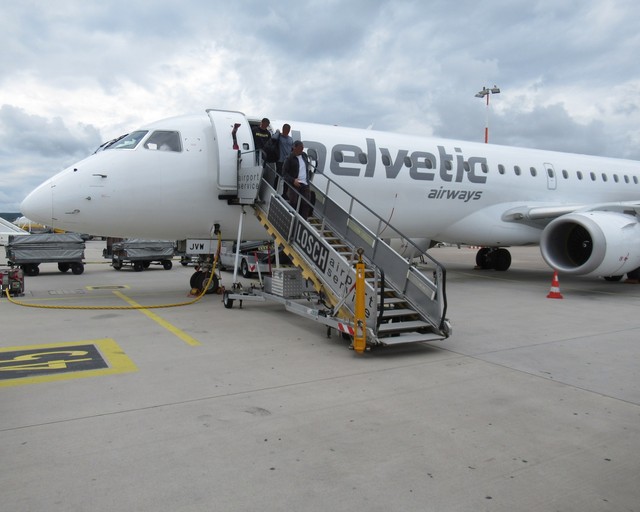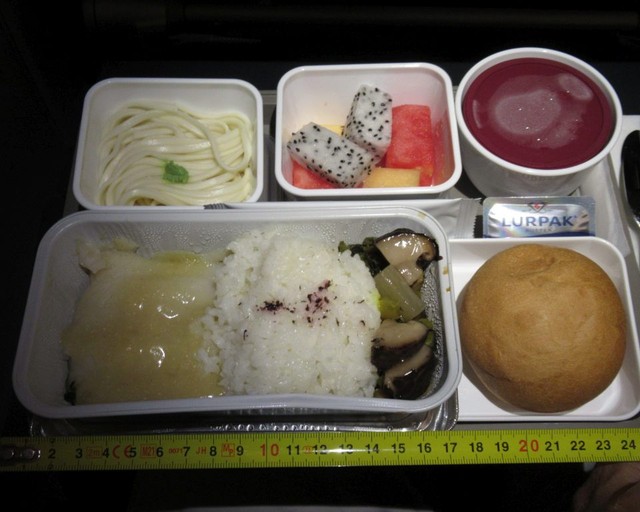This is Leg 3 of this vacation in Mainland China:
Taipei - Hong-Kong (Cathay Pacific), in French there, in English there
Hong-Kong - Beijing (Dragonair), in French there, in English there
Beijing - Datong (Air China), in French there, you are here
Taiyuan - Guiyang (China Express), in French there, in English there (expanded with a tourist bonus!)
Guilin - Jinan (Capital Airlines), in French there, in English there (expanded with a tourist bonus!)
Beijing - Hong-Kong (Dragonair), in French there, in English there
Hong-Kong - Taipei (Dragonair), in French there, in English there
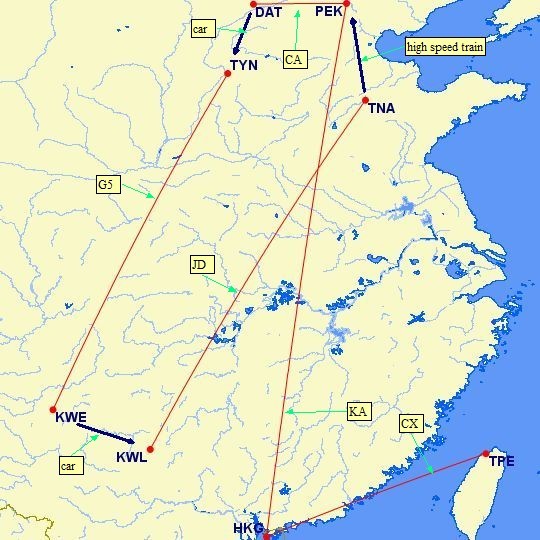
Being China's flag carrier, Air China takes off of course from Terminal 3, the gigantic and prestigious building opened in 2007, ahead of the 2008 Olympics. This FR starts at the kiss and fly in front of the terminal. It is quite jammed, because there are few public transportation means at that time of the day.

The entrance into the terminal is designed to impress the traveler: you go down a slight incline on wide bridges covered with grooved marble. The information screens are well located and it is easy to find the relevant check in counters. Downstairs is as usual the Arrivals level.

Check in is quite commonplace. There are check in automata, to be used only if you do not have checked luggage.

How could I write a Flight Report without a children play area? This time, there is one next to my boarding gate.

There are electric plugs about everywhere to plug or recharge your favorite toy. There is free wifi coverage, accessible by receiving an access code on your Chinese cell phone or by registering on a counter. This is so that the Chinese police knows who surfs where and posts what on the websites which are blocked by the censorship, like Flight Report.

There is already a 737 pier side at gate C6, but it will not operate our flight: we have a bus transfer.

The advantage is to see one of the few planes parked here which do not belong to Air China; this one is from Shandong Airlines.
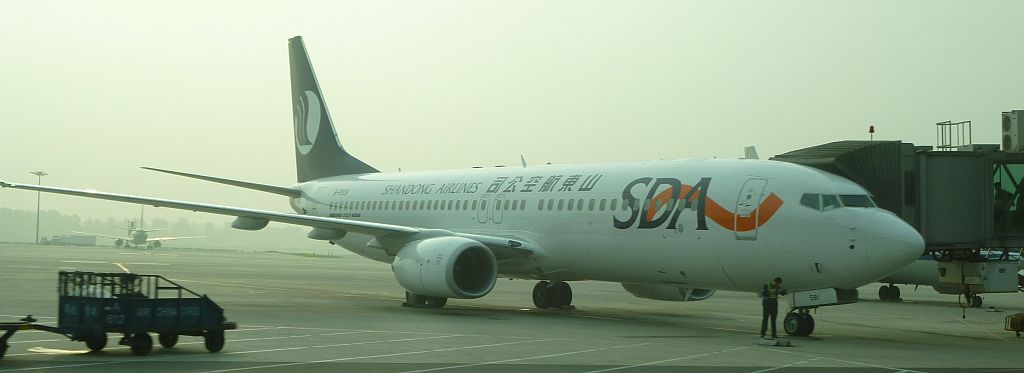
.. until we reach this old 733


We go through the business class, as always 2 rows in 2+2 seating.
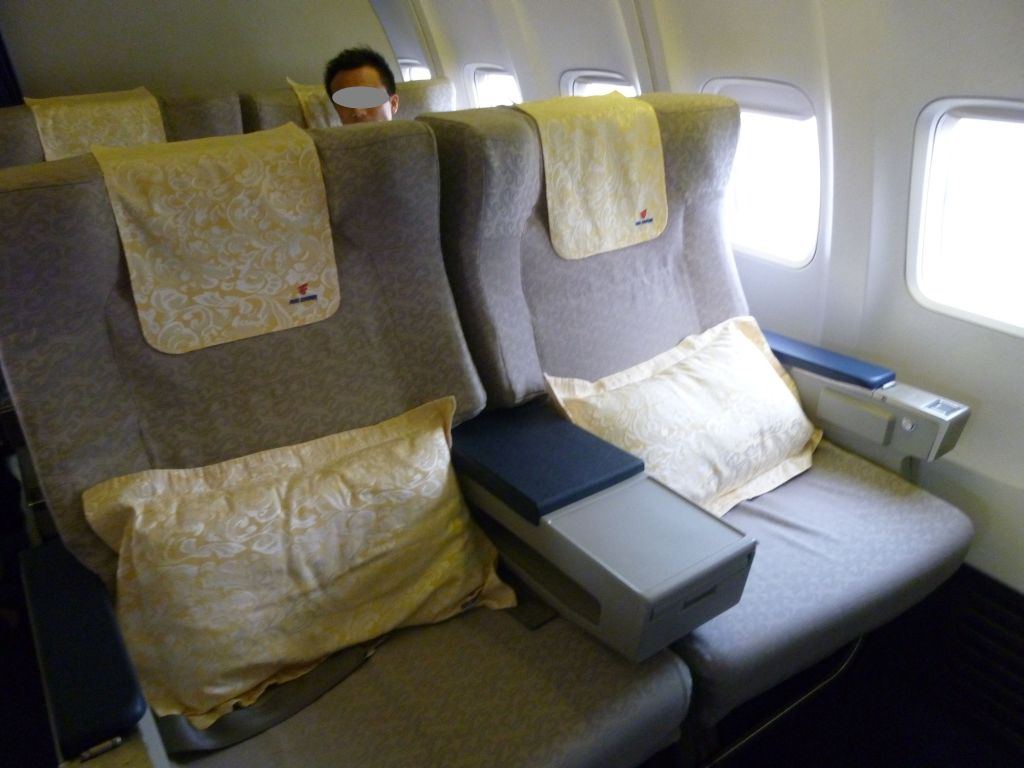
The seat pitch is much narrower than in more recent planes of Chinese airlines.

Countless parked Air China planes.

Two more recent planes, with two versions of the flowery livery which is not very common.
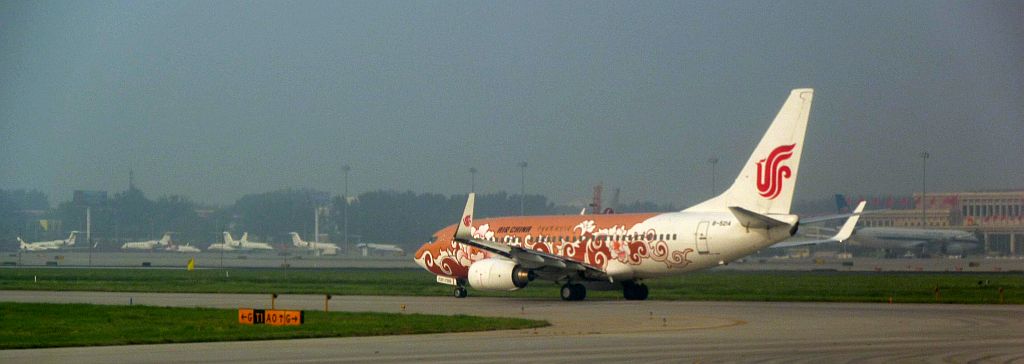

Takeoff from runway 36R. In the background lies the VIP reception pavilion, with a 60's socialist architecture look.

A view of Terminal 2 (International wing on the left, domestic on the right) before the haze hides it, and in the background, linked with a zigzagging corridor to the original Terminal 1, which is now used by low cost domestic airlines.

A duration of 1h05' according to the schedule is massively oversized for a 265km flight, and the flight only lasts 40 minutes. The plane only reaches the elevation of 4,000 m, according to the captain. You cannot expect a full breakfast on such a short flight. The plane is full, and the four FAs (in economy) only have time to distribute a hot hamburger and a 350ml bottle of water before the beginning of the descent. As soon as I had taken this picture, a FA passed to have the tablets folded up.

The J/Y separation curtain is already attached in preparation for landing.

The plane turns above the gullies carved in the loess which is typical of the Shanxi province.
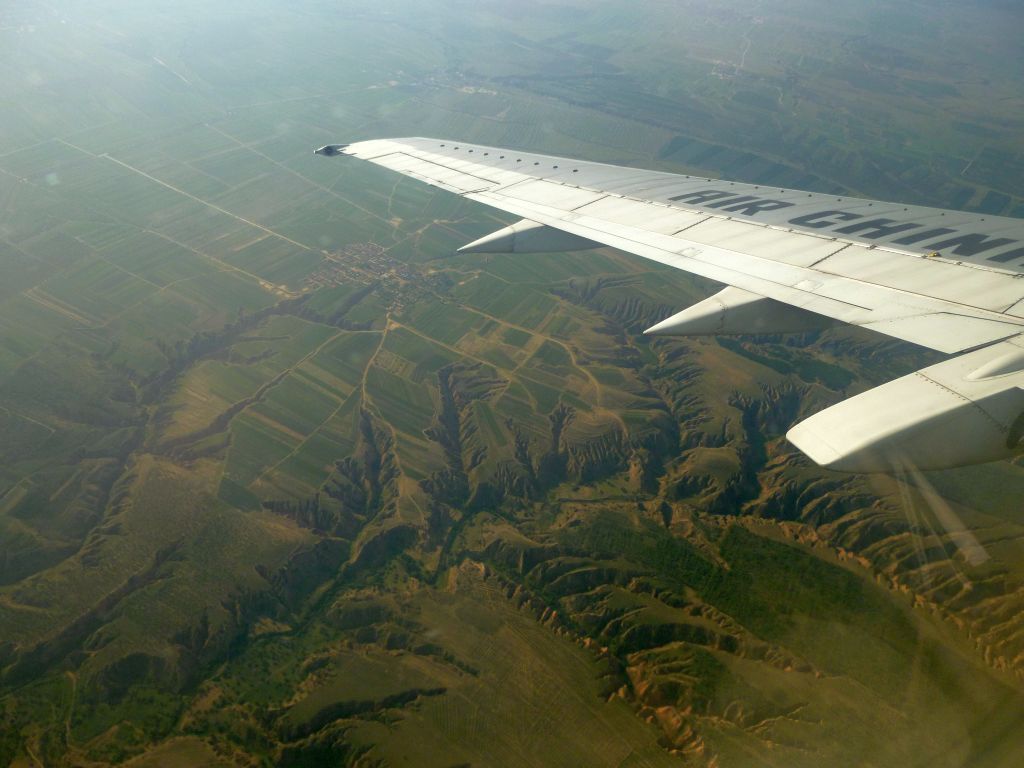
And lands on Datong's runway, where there is no taxiway. From left to right: the control tower, the Departure building, the Arrivals building, and what may be the future Terminal 2.

Given the traffic on the tarmac, a transfer bus is completely useless. This is actually the only aircraft parked in Datong: a Cessna 208 belonging to Avieye, a general aviation airline based in Shanghai. I guess that the tubing which extends behind is for crop dusting or some similar work.

The protecting tarpaulin is no luxury, because Shanxi is a very dusty province: the loess, resulting from the decomposition of sandstone, is an extremely friable material which flies away and infiltrates everywhere.

A last look at the Air China 733

And we reach the luggage delivery room – mine will be the second one.
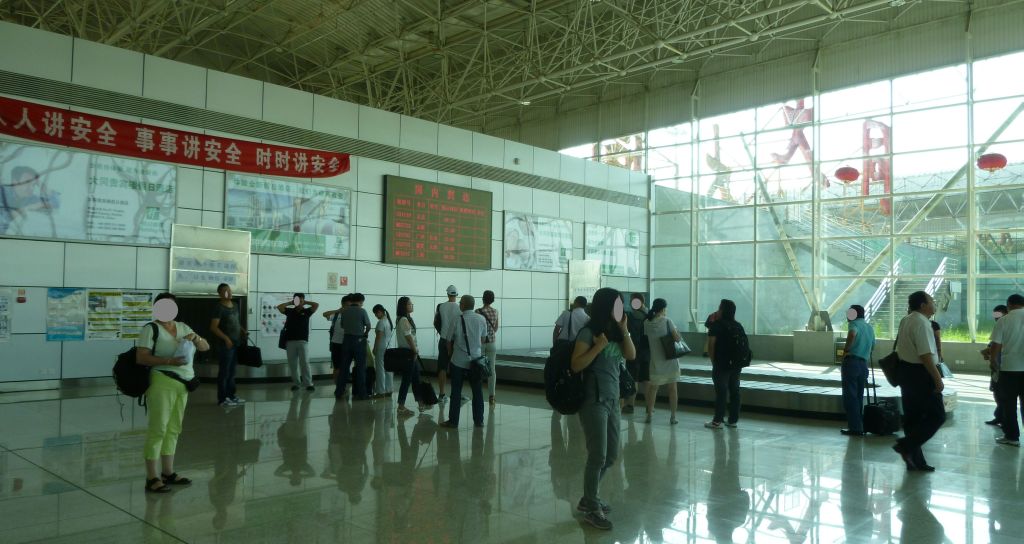
Look at the list of the arrivals overhead: five flights a day and that is it, only one more than Tunxi's (TXL) four daily flights. Note the China Eastern flight from CAN (Guangzhou), located 1,850 km south, with a stop in Changzhi, in the south of Shanxi.

Why go to Datong? Not to visit the spectacular fortifications of the old city:

… not yet, that is, because they were not finished yet. By the time of posting this English version of my Flight Report, they should be ready, but then the east side was completed, but on the north side, there were still building the earth core, and finishing the south side.

The old city will probably be as complete and tidily authentic as the fortification, but at time of visiting, this was more makeshift housing promised to wrecking crews.
No, the real point of going there is to visit the grottoes of Yungang, where a people which was not Chinese sculpted into a one kilometer long sandstone cliff one of the most extraordinary set of Buddhist statues of China, around the year 470 AD.




